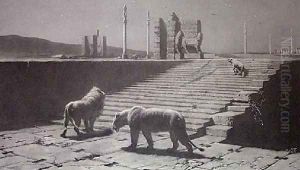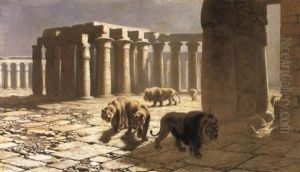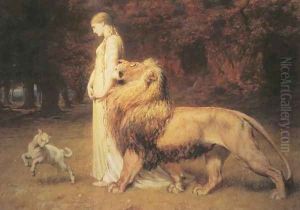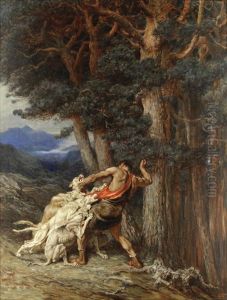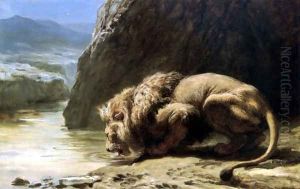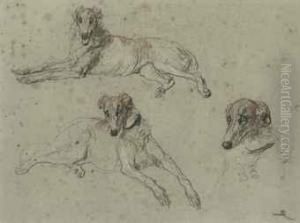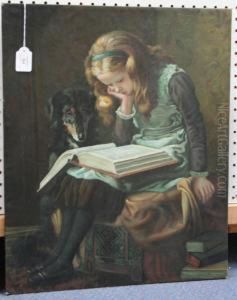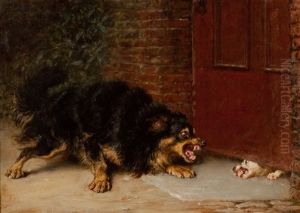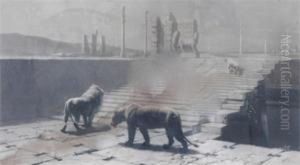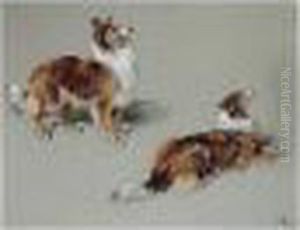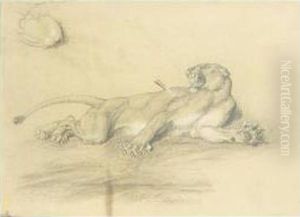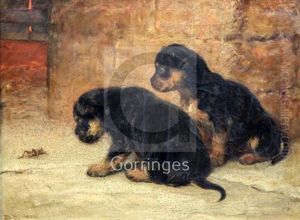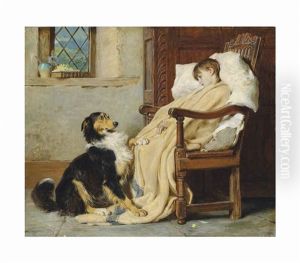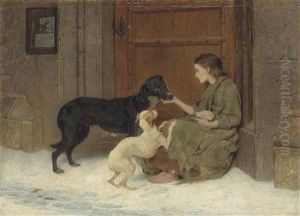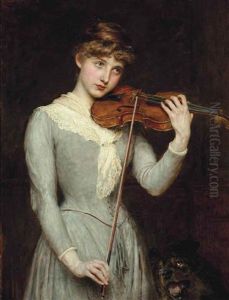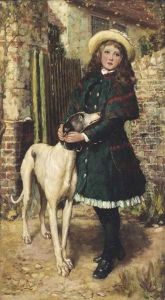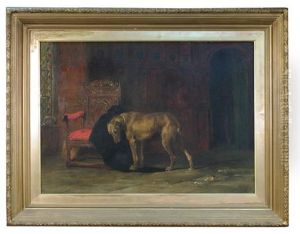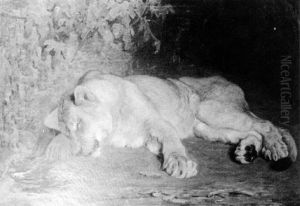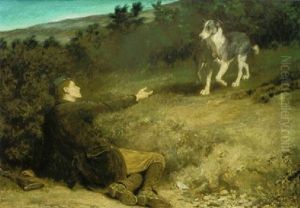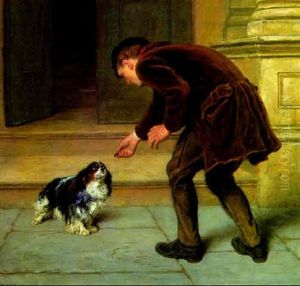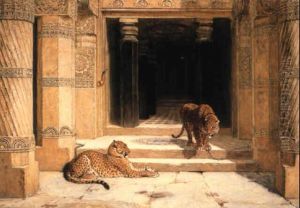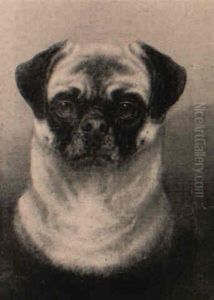Briton Riviere Paintings
Briton Riviere was a British artist born in London, England, on August 14, 1840. He was part of a family that was deeply involved in the art world; his father, William Riviere, was a drawing master and an art teacher, and his brother, Hugh Riviere, would also become a painter. Briton Riviere began his artistic education under the guidance of his father, and later attended the Oxford University where his father was an art teacher, and also studied at the Royal Academy of Arts in London.
Riviere's early works were typically historical or literary scenes, but he is best remembered for his animal paintings, particularly those that include domestic dogs and wild animals. His ability to capture the nature and character of animals in his paintings was highly regarded. Riviere's work reflected the Victorian era's fascination with the natural world and the sentimental relationship between humans and their pets.
During his career, Riviere exhibited extensively, showing over 60 works at the Royal Academy of Arts. His paintings were well received, and he achieved significant recognition during his lifetime. In 1878, Riviere was elected as an Associate of the Royal Academy (ARA), and later as a full Royal Academician (RA) in 1881.
In addition to his animal paintings, Riviere also produced genre scenes and contributed illustrations for books, such as an 1883 edition of Aesop's Fables. His painting style is characterized by fine detail, rich color, and a realistic portrayal of both the human and animal figures.
Briton Riviere's legacy includes a significant contribution to Victorian art, especially in the realm of animal painting. His works have been collected and displayed in many galleries and museums, including the Tate Gallery in London and the Walker Art Gallery in Liverpool.
Riviere passed away on April 20, 1920. Throughout his life, his artworks continued to be popular, and today they are recognized for their historical value as well as their artistic merit. Riviere's paintings remain a testament to his skill in capturing the emotive connections between animals and people, and he is remembered as a prominent figure in the British art world of the 19th and early 20th centuries.



